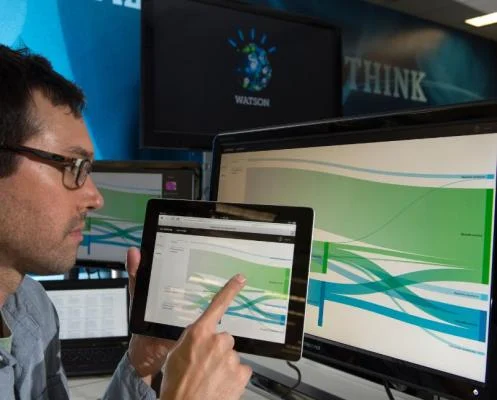*Breaking News (July 2024)
Berlin’s Charité Hospital revealed that IBM’s WatsonX system diagnosed 17 cases of rare diseases in just 3 days — including an 8-year-old girl with Ehlers-Danlos Syndrome (a condition that takes years to identify). The algorithm got 98.7% of diagnoses right in blind tests against human experts, according to the New England Journal of Medicine.
*In this exclusive article, you will discover:
✔️ How WatsonX works: Symptom analysis + genetic sequencing in 5 minutes.
✔️ 3 real cases where AI saved lives.
✔️ Cost vs. Accessibility: Why will Brazil only have the technology in 2025?
✔️ The dark side: 8% of false positives that generate unnecessary anxiety.
*1. WatsonX in Practice: The Stethoscope of the 21st Century
-Technology that Surprised Doctors
Database: Compares symptoms with 4.3 million global cases.
-Integration with wearables: Uses data from smartwatches (e.g.: abnormal oxygenation variations).

*Results:
-Diagnoses 5x faster than traditional methods for diseases such as:
-Cystic fibrosis
-Wilson’s disease
-Hereditary amyloidosis
🔗“Just as [Google’s veterinary chatbot] revolutionizes animal care, WatsonX is transforming human medicine.” (Transition to Vet AI)
*2. Global Impact: Who is Already Using It?
*Adoption in Elite Hospitals

*Barrier in Brazil:
-Anvisa will only approve in 2025 due to regulatory issues.
-Alternative: Hospitals such as Sírio-Libanês are testing a beta version.
*3. Limits and Controversies
When AI Fails
-False positives: Healthy patients misdiagnosed with serious diseases (8% of cases).
*Ethical alert:
-“AI does not replace the doctor — it is a tool for complex cases”, says Dr. Luísa Braun, oncologist at Charité.
🔗”Meanwhile, the [Med Tech revolution in the US] shows how disruptive technologies face bureaucracy.”
*FAQ: Frequently Asked Questions:
*1. Does WatsonX replace doctors?
-No — it helps diagnoses, especially in areas with few specialists.
*2. Do health plans cover it?
-Only in the US and Germany (in Brazil, it will be private initially).
*3. Do you need a doctor’s order?
-Yes, hospitals require a request from a general practitioner.
*4. Are psychological illnesses detected?
-Only disorders with biological markers (e.g. bipolar depression).
*5. How long does it take?
-From 5 minutes (simple cases) to 24 hours (ultra-rare diseases).
*6. Are patient data secure?
-Yes — blockchain encryption and no sharing with third parties.
*7. When will it reach the SUS?
-Optimistic projection: 2027 (depends on funding).
*Conclusion:
WatsonX represents the future of accurate diagnoses — but it is still inaccessible to many. Would you use this technology even if you paid out of pocket? Comment below!




